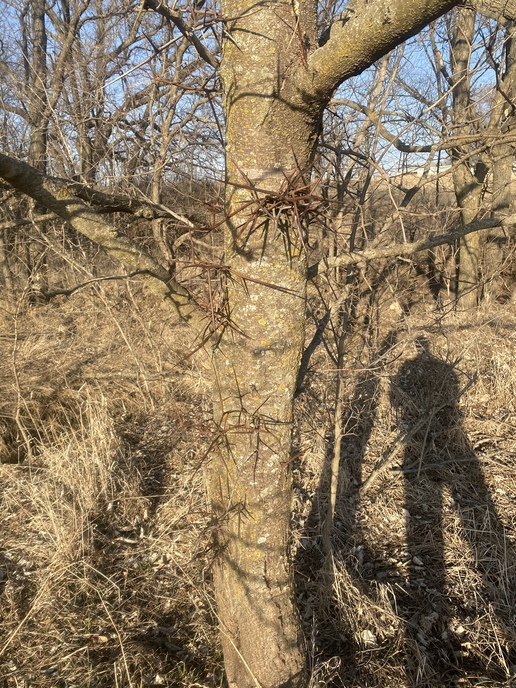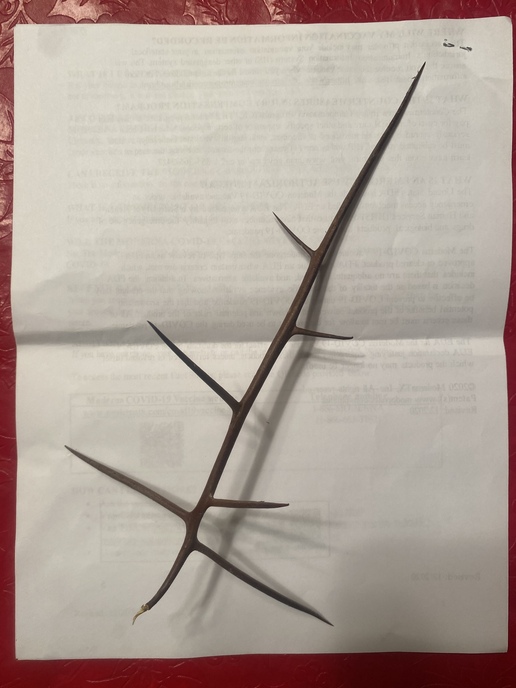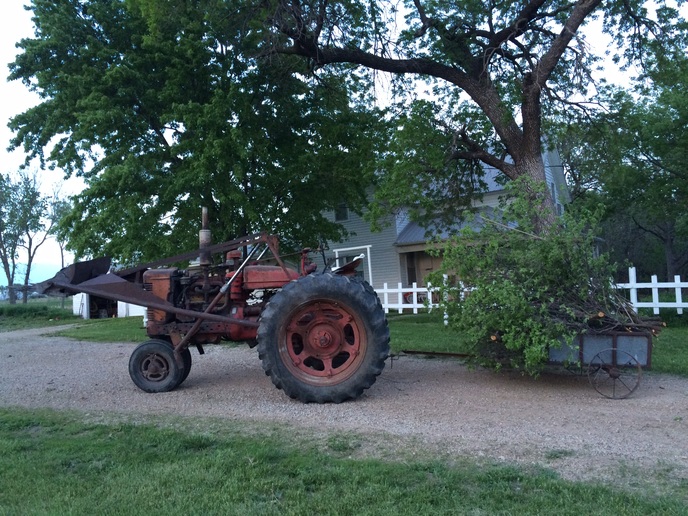used red MN
Well-known Member
- Location
- Coon Rapids, MN
Any of you encountered Thorny Honey Locust trees? The farm I grew up on in NE Kansas has quite a good number. I would say one in 50 trees in the woods along the creek ..or as this German heritage boy was taught ..crick.. that winds through the 80 acres north to south. I will attach some photos. Should have taken a picture of a normal section of a branch, but they all have spines on them anywhere from 3 to 12 inches apart, with a length from a 1/4 in. long to 3 in. plus. When the trees are young they are just smooth, once they mature a little probably 5 years or more they form a normal rough bark and start growing spine clusters along the main trunk. The one in the photo is probably 6 in. diameter at the location of the photo. The other photo is of an unusually long spine cluster, it is laying on a normal letter size paper for size. If I am looking at the right map, it looks like they occupy a zone from Eastern Nebraska straight South into Texas and East, save a 400 mile wide strip back from the Atlantic coast. Then there is also what we call ..hedge.. trees there as well probably, approximately 1 in every 25 trees; others may know these as Osage Orange or Hedge Apple. Their thorns usually do not grow much more than an inch in length with the majority of them being about a half inch long. However, they are placed much closer together along the branches say every 1 and a half inches and any off shoot branch of an 1/8 in. diameter or so bares the weaponry. I put a link to Wikipedia but if you search ..Osage Orange Thorns.. you will get a better idea. I did not really care to give any publicity to the website that had the best pictures. I should also say the East side of the 80 still has a continuous hedge row panted way back when for property division as well as a windbreak, this was true of many farms in that part of Kansas as well as several other states. To keep it tractor related I am also picturing my M with the Horndraulic trip loader.. this was during a different tree clean up several years ago before I installed the hood. It helped me this weekend clean up a few of the described trees and some others that had made there way onto the edges of fields or other areas of moms farm. One 18 in diameter trunk hedge had fallen across the creek. It had been there a while and had quite a bit of other deadwood blocked up so I had something to stand on to saw it up, and only about fell in the water once when some of the deadwood gave way. It was probably no more than 2 foot deep, but I did not really care to check. Quite a bit of the hedge was dead so that was a plus, still quite a bit of a challenge. I should have taken some pictures, but just never get in that mindset during the heat of battle, sorry.







